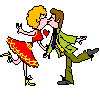
Writing in the first person is difficult, even when you like it. It is intimate and intense and, as such, can become boring. The viewpoint character can only know what he/she hears or sees. Many readers don’t like reading first person. But if you love it, you really love it—writer or reader.
IN THE BEGINNING
Most of my early novels were written in third person and, as a beginner, I tried to emulate the kinds of third-person voices I admired. But I also enjoyed reading novels by a number of authors who write in first person—Janet Evanovich, Katie MacAlister, Dick Francis, to name just a few. With a certain number of novels completed, I decided to try a first person novel as an experiment. Just to see if I could do it.
As it turned out, I loved the voice. I felt as though I'd finally found me; as though I was sitting across the table from a best girlfriend in Starbucks, telling her what had happened to me in the last several months. Very comfortable, natural, and personal.

Take the case of my recently released time travel novella A Timeless Melody. I had written this as a short story in the view point of the hero. My editor at the time asked me to rewrite it in third person
and give both viewpoints. I agreed (reluctantly) without knowing what I was getting myself into.
Including the view point of the heroine ( the time traveler), brought to light a whole new dimension to the story which meant I had to create some of the world she lived in. It involved a lot more than just showing the reader her emotions and thoughts. The manuscript went from a 10K short story into a 30K novella. A great improvement. It was the right choice for the structure.
Not all stories are created equal. One of the decisions an author should make early in the writing process is the structure of the story...how it will be told. Often the choice isn't made consciously, but it should be.
The author's goal should be telling the story in the best way for that particular story. That doesn't mean you have to outline the novel in detail—you can be a total pantser and start with just an idea—but you should have given thought to how the story begins and ends, the main characters, and the general nature of the work. The structure should fit the kind of story you're writing.
You may have to write a few chapters before you finalize the structure, but it should be early on in the writing process. For me, the structure of a novel includes, but is not limited to:
1. Who is telling the story.
Is the protagonist telling the story or is it the hero or heroine telling it? Are several main characters telling it? Is it told by an observer, an omniscient narrator, etc.?
2. The Tense and Person used;
3. How the Story Unfolds
Is the story told as it unfolds or as though the characters are looking back on past events, or a combination of those. In the former, the characters (and narrator, if that is part of the structure) know only what has happened at any given point in time and can only speculate about the future. In the latter, the “teller” knows the outcome of the story at the point of telling it. Some novels combine both approaches seamlessly.
4. Devices
Is it written as a series of letters from one person to another? In the form of a diary? Does it have a frame (such as a character in the contemporary present discovering someone else's story in the past, or perhaps looking back on their own story in the past)? Are five characters going to tell the story, each in third person VP or first person VP? And so on.
TELLING YOUR STORY IN THE FIRST PERSON
There are advantages to telling a story in first person. The tight focus of this view point is immediate, intimate, and can increase reader identification (if your character doesn't become boring). You can make the voice of view point character really distinct and different. She might be proper and polite to others, but wow! What's going on in her mind is outrageous.
Of course, you can do all these in deep-immersion third person.
In first person, everything in the story (all events, characters, dialogue, setting, emotions) is filtered through the eyes, thoughts, and feelings of the VP character. That allows greater layering of the character, but it's also a big constraint.
Alicia Rasley, in her book The Power of Point of View, writes that "... many editors and readers feel it is limiting; they don’t like being confined to one person’s head for a whole book.”
WHY I LIKE FIRST PERSON
I like writing in first person because this is the way we live our lives. As human being, we are confined to one head...your own. You don't know what your spouse, child, best friend, or dog is really thinking or feeling. You may believe you do, from knowing the person well, reading body language, and other indicators—even by what the person says—but you really don't know.
You assume. You guess. You speculate. You intuit. And often you're right, but you don't know. I believe this reflection of real life is what appeals to or repels readers the most about the view point.
My experience with A Timeless Melody is, however, proof that an author needs to consider that the view point he or she prefers as a writer isn't necessarily the best to tell the story. □
□ Originally printed in the RB4U blog, June 10, 2014
 RSS Feed
RSS Feed